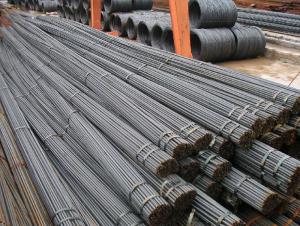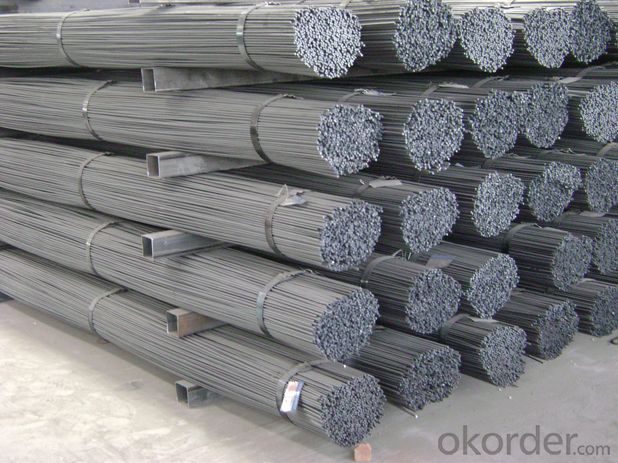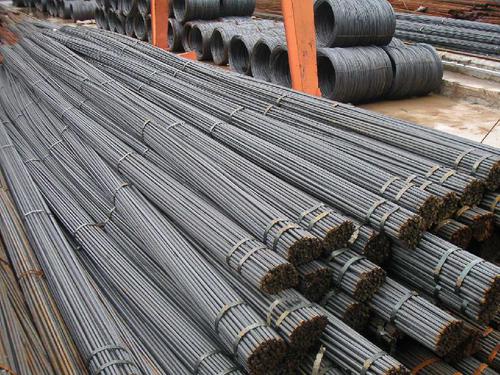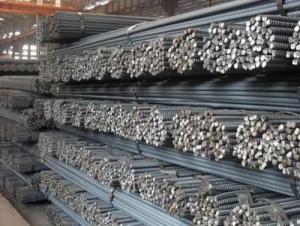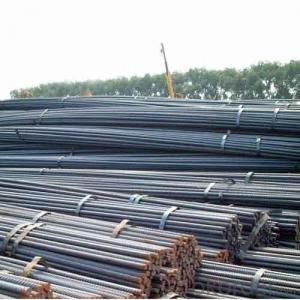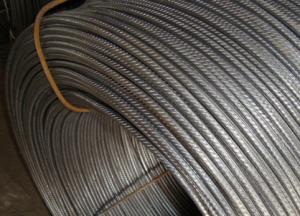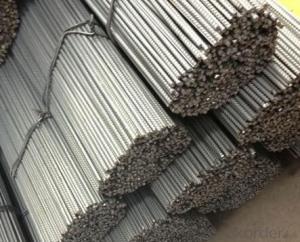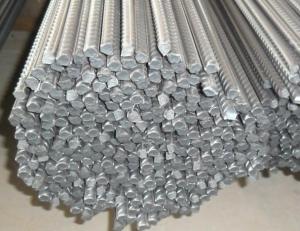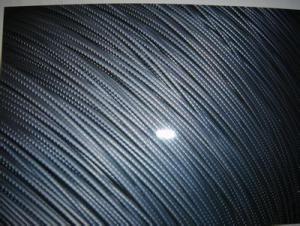Six point five mm Cold Rolled Steel Rebars with Good Quality
- Loading Port:
- Tianjin
- Payment Terms:
- TT or LC
- Min Order Qty:
- 100 m.t.
- Supply Capability:
- 15000 m.t./month
OKorder Service Pledge
OKorder Financial Service
You Might Also Like
Specifications of Six point five mm Cold Rolled Steel Rebars with Good Quality:
Name | Six point five mm Cold Rolled Steel Rebars with Good Quality | |
Diameter | 5mm, 5.5mm, 6mm, 6.5mm, 7mm, 8mm, 9mm, 10mm, 11mm, 12mm, | |
Length | 6M, 9M, 12M or as required | |
Price | Keep lower operating costs so as to offer competitive price for our clients | |
Label | to be specified by customer, generally, each bundle has 1-2 labels | |
Application | Building, construction | |
Invoicing | Actual or Theoretical Weight Basis as buyer’s request. | |
Theoretical weight and section area of each diameter of Six point five mm Cold Rolled Steel Rebars with Good Quality as below for your information:
Diameter(mm) | Section area (mm²) | Mass(kg/m) | Weight of 12m (kg) | Pcs/ton |
6.5 | 33.2 | 0.261 | 3.132 | 319.28 |
Packaging & Delivery of Six point five mm Cold Rolled Steel Rebars with Good Quality:
Packaging Detail: products are packed in bundle and then shipped by container or bulk vessel, deformed bar is usually naked strapping delivery, when storing, please pay attention to moisture proof. The performance of rust will produce adverse effect.
Each bundle weight: 2-3MT, or as required
Payment terms: TT payment in advance or Irrevocable LC at sight.
Trade terms :FOB, CFR, CIF
Delivery Detail: within 45 days after received advanced payment or LC.
FAQ:
Q1: Why buy Materials & Equipment from OKorder.com?
A1: All products offered byOKorder.com are carefully selected from China's most reliable manufacturing enterprises. Through its ISO certifications, OKorder.com adheres to the highest standards and a commitment to supply chain safety and customer satisfaction.
Q2: How do we guarantee the quality of our products?
A2: We have established an advanced quality management system which conducts strict quality tests at every step, from raw materials to the final product. At the same time, we provide extensive follow-up service assurances as required.
Q3: How soon can we receive the product after purchase?
A3: Within three days of placing an order, we will arrange production. The shipping date is dependent upon the quatity, how many sizes you want and the plan of production, but is typically 1 month to 2 month days from the beginning of production.
Images of Six point five mm Cold Rolled Steel Rebars with Good Quality:
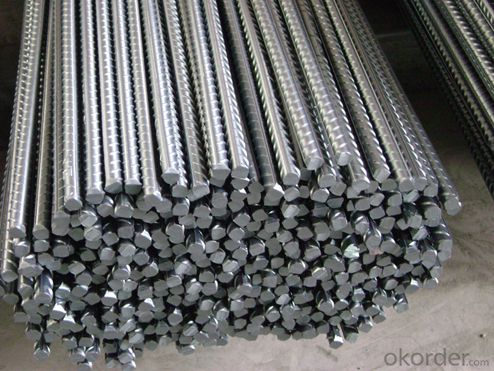
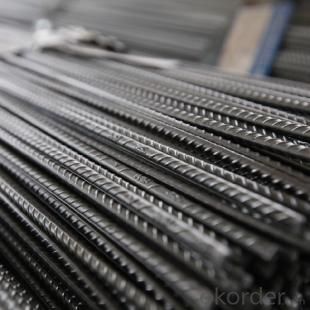
- Q: Can steel rebars be used in modular bridge construction?
- Yes, steel rebars can be used in modular bridge construction. Steel rebars, also known as reinforcing bars, are commonly used in bridge construction to provide reinforcement and strength to the concrete elements. In modular bridge construction, precast concrete elements are used to assemble the bridge components off-site, and steel rebars are embedded within these elements to enhance their structural integrity. The use of steel rebars in modular bridge construction allows for a more efficient and cost-effective construction process. The precast elements can be manufactured in a controlled environment, ensuring high-quality and consistent production. The steel rebars are accurately placed within the elements during the manufacturing process, ensuring proper reinforcement, and eliminating the need for on-site rebar installation. Additionally, steel rebars provide the necessary strength to withstand the loads and stresses that bridges are subjected to. They help in distributing the load evenly and preventing cracking or failure of the concrete elements. The use of steel rebars in modular bridge construction ensures the durability and longevity of the bridge structure. Moreover, steel rebars can be easily integrated into the modular bridge design, allowing for flexibility and customization. Different sizes and configurations of rebars can be used based on the specific requirements of the bridge project, ensuring optimal structural performance. In conclusion, steel rebars are widely used in modular bridge construction as they provide reinforcement, strength, and durability to the precast concrete elements. Their use ensures a cost-effective and efficient construction process while maintaining the structural integrity of the bridge.
- Q: How do steel rebars resist corrosion?
- Steel rebars resist corrosion through a process called passivation. When the steel is exposed to air and moisture, a thin layer of iron oxide forms on its surface, which acts as a protective barrier against further corrosion. This layer, also known as rust, prevents oxygen and moisture from reaching the inner layers of steel, thereby preventing further oxidation. Additionally, steel rebars are often coated with materials such as epoxy or zinc to provide an extra layer of protection against corrosion. These coatings act as a physical barrier between the steel and the environment, preventing contact with corrosive elements. Regular maintenance, such as cleaning and applying protective coatings, can also help to extend the lifespan of steel rebars and prevent corrosion.
- Q: How heavy can a 25 mm thread steel bear?
- Hot rolled ribbed bar is divided into two levels, HRB335 (old No. 20MnSi), three HRB400 (20MnSiV, 20MnSiNb, old No. 20Mnti), four grade HRB500 three grade.
- Q: What are the different methods for cutting steel rebars on-site?
- There are several methods available for cutting steel rebars on-site, depending on the specific requirements and limitations of the project. Some of the common methods include: 1. Manual Cutting: This method involves using handheld manual tools such as rebar cutters or bolt cutters to cut through the steel rebars. It is suitable for smaller projects or areas where power tools may not be accessible. 2. Abrasive Cutting: Abrasive cutting, also known as grinding or cut-off saws, utilizes a high-speed rotating disc with abrasive particles to grind through the steel rebars. This method is effective for cutting rebars of various sizes and is commonly used in construction sites. 3. Torch Cutting: Using oxy-fuel or plasma torches, this method involves heating the steel rebars to a high temperature and then cutting through them using the intense heat. Torch cutting is suitable for thicker and larger rebars but requires caution and safety measures due to the open flame involved. 4. Shear Cutting: Shear cutting involves using hydraulic or mechanical shears to cut through the steel rebars. This method is efficient for cutting rebars quickly and accurately, especially for larger projects. 5. Hydraulic Cutting: Hydraulic cutters use hydraulic pumps to generate high pressure, which is then used to power the cutting blade. This method is commonly used for heavy-duty cutting tasks and can cut through thick rebars with ease. 6. Electric Cutting: Electric cutters, such as electric rebar cutters or portable band saws, are powered by electricity and provide a clean and precise cut. They are commonly used in construction sites where power is readily available. It is essential to consider the specific requirements of the project, including the size and thickness of the rebars, available power sources, and safety considerations, when selecting the appropriate method for cutting steel rebars on-site.
- Q: Can steel rebars be used in sound barrier walls?
- Indeed, sound barrier walls can employ steel rebars. These rebars are regularly employed in the construction of reinforced concrete structures, such as sound barrier walls. They furnish the walls with resilience and longevity, guaranteeing their ability to endure the pressures exerted upon them by wind, weather, and impacts. Moreover, steel rebars aid in fortifying the structural integrity of the sound barrier walls, rendering them more impervious to vibrations and the transmission of noise. Consequently, steel rebars are a fitting and frequently utilized material in the construction of sound barrier walls.
- Q: What are the factors to consider while choosing the right type of steel rebar for a project?
- When choosing the right type of steel rebar for a project, there are several factors to consider. These include the specific requirements of the project, such as the structural design, load-bearing capacity, and environmental conditions. The grade and size of the rebar must also be taken into account, as they determine its strength and ability to withstand forces. Additionally, factors like corrosion resistance, cost, and availability are important considerations to ensure the selected steel rebar is suitable for the project's needs.
- Q: How are steel rebars measured and priced?
- Steel rebars are measured and priced based on their weight and length. The weight of a steel rebar is usually measured in pounds or kilograms, while the length is measured in feet or meters. The weight of a rebar is determined by its diameter, which is typically measured in millimeters or inches. To calculate the price of a steel rebar, the weight is multiplied by the cost per unit weight. The cost per unit weight can vary depending on factors such as the type of steel used, the market demand, and the supplier. This price is usually quoted in terms of cost per pound or cost per kilogram. In addition to the weight and length, other factors may also influence the pricing of steel rebars. These can include factors such as the grade of steel, the manufacturing process, and any additional treatments or coatings applied to the rebar. It is important to note that the pricing of steel rebars can vary from supplier to supplier, so it is advisable to obtain multiple quotes and compare them before making a purchasing decision.
- Q: What is the standard size of a steel rebar?
- The standard size of a steel rebar typically ranges from 6mm to 50mm in diameter.
- Q: How do steel rebars affect the durability of concrete structures?
- Steel rebars greatly enhance the durability of concrete structures. By reinforcing the concrete, rebars improve its tensile strength, preventing cracking and enhancing its ability to withstand external forces and loads. This reinforcement also helps to increase the overall lifespan of the structure, making it more resistant to corrosion, fatigue, and other forms of degradation.
- Q: Can steel rebars be used in structures with heavy dynamic loads?
- Structures with heavy dynamic loads can indeed make use of steel rebars. In reinforced concrete structures, steel rebars are commonly employed to enhance tensile strength and improve overall structural integrity. Their specific design enables them to withstand heavy loads, including dynamic ones caused by vibrations, earthquakes, or moving vehicles. The remarkable tensile strength of steel rebars allows for effective absorption and distribution of dynamic loads, effectively preventing structural failure or collapse. Moreover, steel rebars exhibit exceptional resistance to fatigue, thereby maintaining their strength and integrity even under repeated loading and unloading cycles. To ensure optimal performance under heavy dynamic loads, engineers take into account various factors, such as the size, shape, and spacing of rebars, as well as the quality of the concrete and the design of the structure itself. By meticulously designing and reinforcing the structure with steel rebars, it becomes possible to create a building that is both safe and durable, capable of withstanding heavy dynamic loads.
Send your message to us
Six point five mm Cold Rolled Steel Rebars with Good Quality
- Loading Port:
- Tianjin
- Payment Terms:
- TT or LC
- Min Order Qty:
- 100 m.t.
- Supply Capability:
- 15000 m.t./month
OKorder Service Pledge
OKorder Financial Service
Similar products
Hot products
Hot Searches
Related keywords

